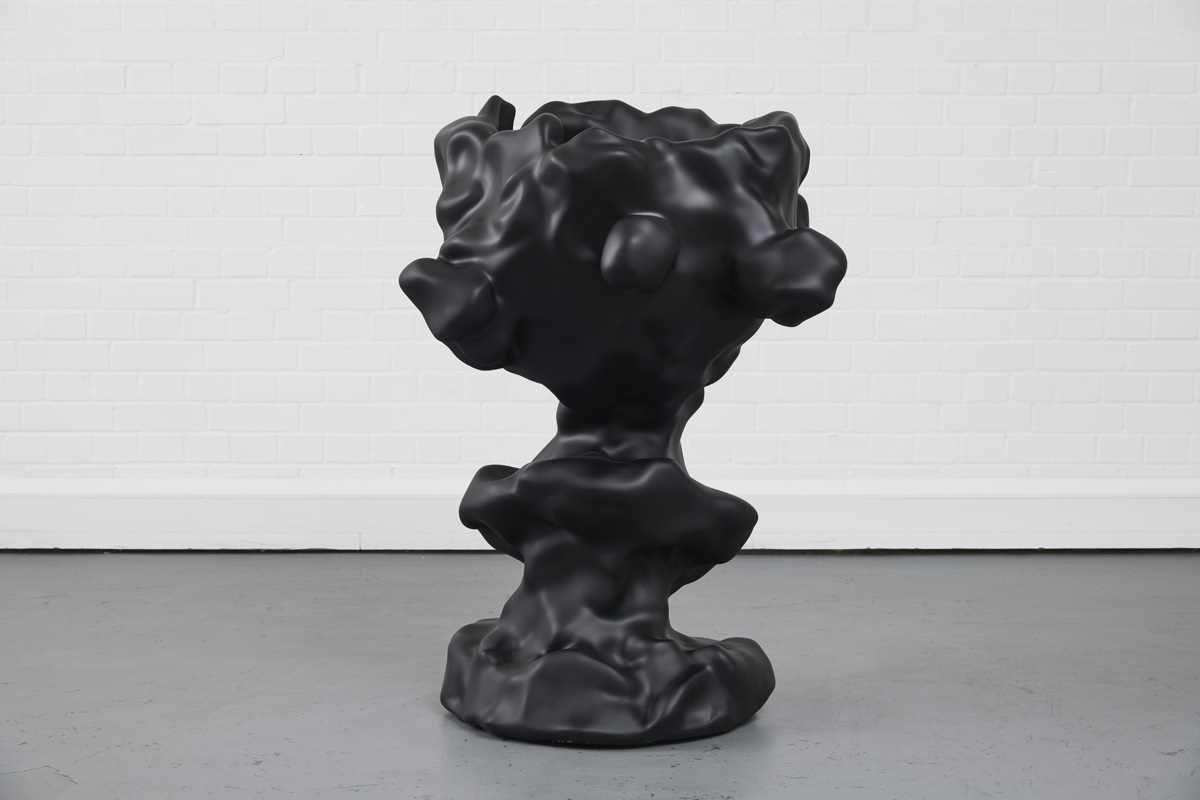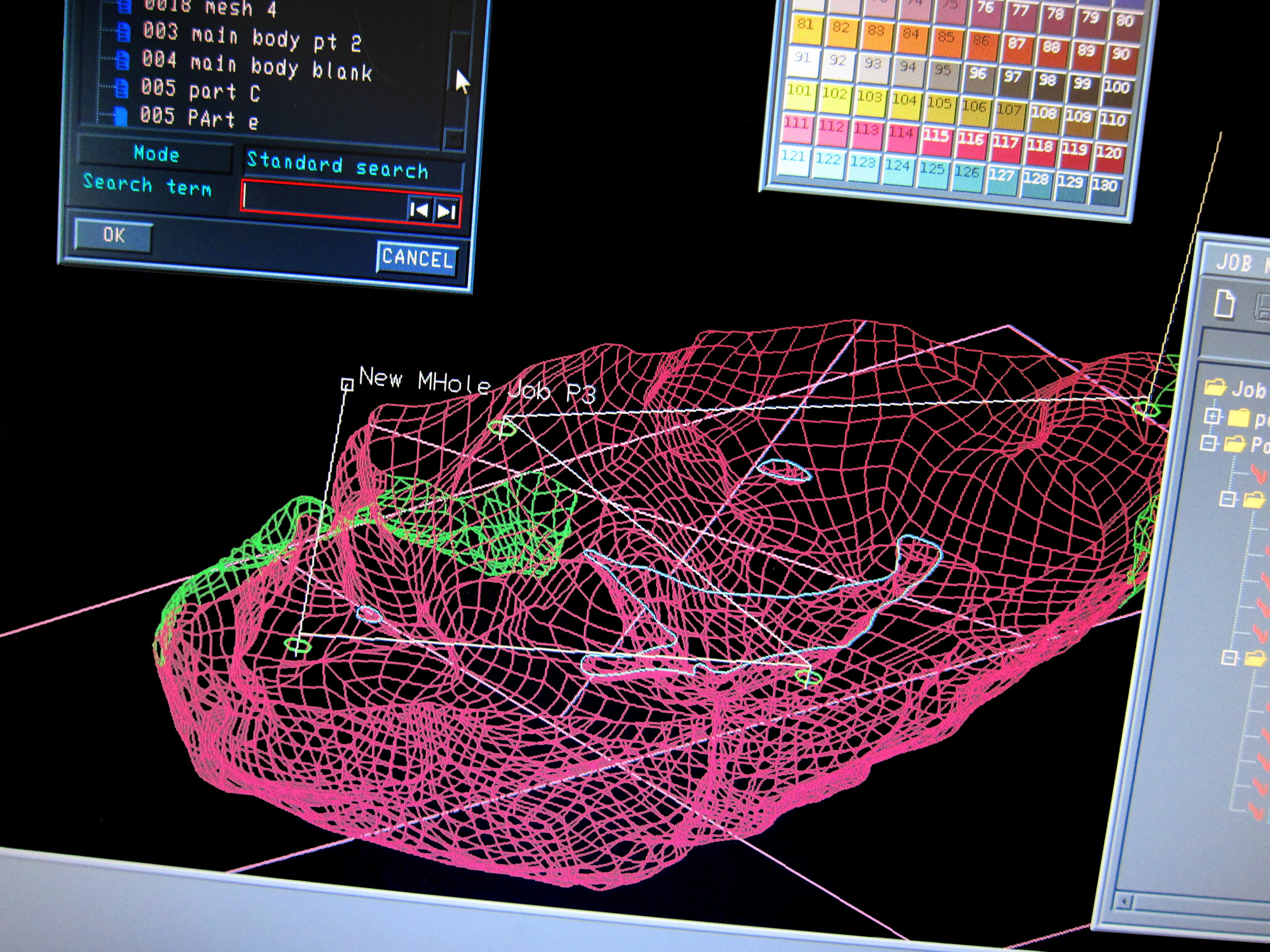Much looking forward to planning a two man show, with Neal Rock for the new year, at the Transition Gallery.
Neal Rock at the Walsall Gallery
Augustine Carr
Much looking forward to planning a two man show, with Neal Rock for the new year, at the Transition Gallery.

Neal Rock at the Walsall Gallery
Working on a new series of tapestries where modest crayon drawings are translated into digitally embroidered tapestry. Pleased to be working with former Dolce and Gabbana knitwear designer Genevieve Sweeney on this.

Preferred By Teachers, Digitally Embroidered Cotton on Linen, 230x140cm, Augustine Carr 2018
Very much enjoying the play of the sculpture and Otto Ford's print in the Nature Blick show, seen here in Ben Westoby's documentation.

Pablo In Pieces, Archival Print, 250x200 cm, Otto Ford 2018

Summa Theologiac VII, CNC milled SikaBlock finished in Black, 55x110x63 cm, Augustine Carr 2018

Glanz, CNCed SikaBlock finished in Black, 133x87x86cm, Augustine Carr 2017

Natur Blick Instalation, 2018
Review by Olivia Aherne
The eye scans, searches and stutters across ‘Natur Blick’, the new group show curated by Augustine Carr and Paula Zambrano at The Koppel Project in London. Before visiting the show I read the short accompanying text by the artist, writer and academic Chantal Faust. The text traces the different sensory and digital guises of scanning and, as my eyes crossed the page from left to right, simulating the rhythmic and repetitive action of both human and machine, I became hyper aware of the ease with which we scan images, ideas and information.
In ‘Natur Blick’, scanning - the instinctive visual movement of the human eye, a gesture co-opted by modern technology - is the subject of the work of ten contemporary artists: Augustine Carr, Chantal Faust, Otto Ford, Gili Lavy, Clair Le Couteur, Samantha Lee, Alix Marie, Anna Skladmann, WARD and Andrea Zucchini. Their work each explores scanning as a multi-faceted operation: as a creative method, a mode of representation, research and rehearsal and as an encounter with contemporary art.
This specific exhibition encounter is one of many different surfaces, sizes and synchronicities and is presented across the two floors of the gallery space. From photography to installation and video to sculpture, the show is an intriguing balance of analogue and digital, two-dimensional and three-dimensional. Positioned in the centre of the ground floor are two 3D rendered sculptures by Carr titled ‘Summa Theologica’ (2018) and ‘Glanz’ (2017). Carr’s sludgy sculptural forms offset the precise nature of the scanning technology used to create them, it is here that the digital emerges as something fluid and perceptive. Hung on the opposite side of the room is another work by Carr, ‘Preferred By Teachers’ (2018). The two metre digitally designed hanging fabric puts a modern spin on on the ancient tapestry. Also presented on the ground floor is Otto Ford’s ‘Pablo in Pieces’ (2018) which preserves the movement and expression of a paintbrush through effect and rendering. By employing digital mediums that scan, print and imitate, both Carr and Ford remodel the traditional mediums of painting and sculpture whilst challenging contemporary digital aesthetics.
Tucked downstairs in a room of its own is Alix Marie’s ‘Orlando’ (2014), a large-scale photographic installation composed of prints of close-up body parts which have been dipped in wax, crinkled, scanned and reprinted. Marie’s process results in a melting and crackling effect where human flesh becomes blurred and ungendered. The title, which references Orlando, a character that turns from male to female in Virginia Woolf’s novel of the same name, works to reaffirm Marie’s blurring of binaries, a blurring which is symptomatic of scanning, where blindness and awareness occur simultaneously.
The title of the show loosely translates as the ‘nature of looking’ and is derived from a quote by the German writer Johann Wolfgang von Goethe, “Thinking is more interesting than knowing, but less interesting than looking.” Much of the work in ‘Natur Blick’ speaks to Goethe’s proposition, its appeal is found in its aesthetic qualities and visually exposed artistic processes - scanned, printed, recorded - each work reveals its own traces and perceptions. These traces and interpretations are most engaging in the three-dimensional work where depth is explored and the immaterial is made material. The abundance of two-dimensional prints feels too flat, too familiar and too easy to scan. In today’s flattened and scannable landscape, where surface and process is squashed to screen, the allure is in the sculptural works that glare back, causing an optical stutter.
Assisting Alix Marie in remaking my favourite work of hers - Orlando for Natur Blick this week. So grateful for CJ Everard to suggesting Alix to me for our Natur Blick show.

Alix Marie, Orlando, Photographic Instalation, Various Dimensions.
Chantal Faust, 2018.
Supporting text for Natur Blick.
Such a pleasure to be showing alongside Mustafa Husuli and Soojin Kang in Adventitous on the fourth floor of the soon to be demolished Whitleys, from the 8th to the 22nd of March.

Really pleased to have Clair Le Couteur RCA PHD opening and closing Natur Blick, a show I am curating a the Koppel Project around the idea of scanning. Where to scan might be 'where the digital meets nature' or 'to look at something with real intention'. Clair will perform with Carli Jefferson as the Lunatraktors. "‘Scan’ first comes into English to describe analysing the rhythm or structure of verse by tapping the foot. Performance research duo LUNATRAKTORS work with an intuitive, collaborative form of scansion, re-awakening lost songs from the folk archive into embodiment. Working with harmonic singing and body percussion, voice and rhythm are used to scan the gallery space, picking out resonant frequencies and ringing tones. This singing practice is combined with LUNATRAKTORS’ wider project of self-transformation through scanning the archive of folk song for moments that resonate with their theoretical, personal and political concerns, scanning the written verse to ‘hear’ the music in it, and re-archiving that material into the body by ear and by heart. ” Here is a clip of Clair performing at the Horse Hospital.

Click Here for Issue 14 of Floorr Magazine
A clip from the Summa Theolologica Film, in an edition of ten. Contact me for availability.
To view a PDF of the my Summa Theologica Catalogue with essays by Ansel Krut and William Horner - click here.
Very pleased with this crisp scan from Sample & Hold for a new work, in progress for a private commission.
Karleung Wai, Specialist Technical Instructor in Additive Manufacturing at the Royal College of Art, discusses our work to together in making Summa Theologica in RCA Vehicle Design, this weekend at the Innovation Conference in the the Hague, Netherlands.

Delighted to have 'Things To Make' selected by the Royal College of Art Custodians for the RCA College Collection. Artist proofs of all three photographed paintings shown in the RCA Show of 2016 were selected by the RCA College Collection Custodians, with "Things To Make" requested by the Dean of Fine Art, Juan Cruz. "The Royal College of Art College Collection is a collection of over 1000 works designed to represent significant developments in British painting by alumni and staff." These are the first photographs to be added to the Royal College of Art, Painting Collection.

Things To Make, archival digital C-type print an Hahnemuhle Pearl Rag in aluminium box. 110x135x5cm 2016
My graduate show has sold out, to some really good collections. Many thanks to all the RCA Painting Faculty. And Flint Fine Art and Hahnemuhle for their fantastic sponsorship. Selected Images

The work of Augustine Carr crosses several registers, combining painting, sculpture, print, photography, digital scanning and film.
An appropriated book cover is painted over, not so much defaced as embellished, and then it is scanned and printed at a much-enlarged scale. His work ‘Things to Make’ depicts a few trees painted in a free and simple manner. The book it is painted on, referred to in the title, is the classic book for children, and it underlines the childish nature of the painting. But there is more than just childish irreverence at play however, as the enlargement works to both distance us from the emotive painted book and to bring us closer to it through its enlargement. The device is both undone and magnified, as is the emotional intimacy.
His sculpture ‘Summa Theologica’ works in a similar way, but involves a small hand-modeled plasticine sculpture enlarged and reproduced by detailed CNC milling. Again, what appears as a small child-like sketch is enlarged and reproduced with a technical precision that it amplifies the haptic quality of the object and places it in a space of intimate virtuality.
Augustine Carr also makes films, involving his sculpture and shifts of scale. His ‘An Investment for Economy’ involves a hearse driving an enlarged life-size reproduction of a set of hand-modeled castle crenellations. The object and the performed action are doubly over-blown and yet with the distance of the film medium, the elegy to what might be an embattled childhood is given poignancy.

Production still from "An Investment for Economy"